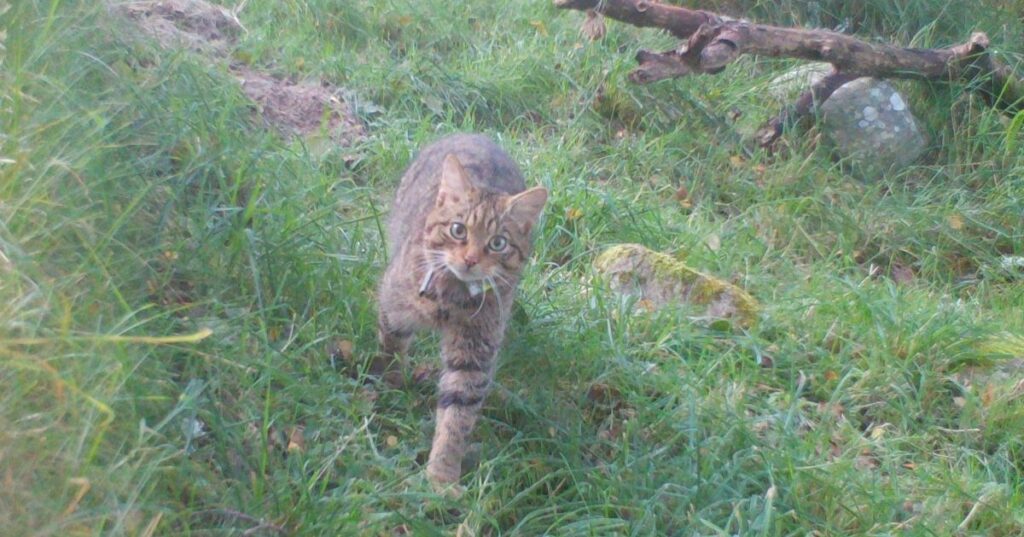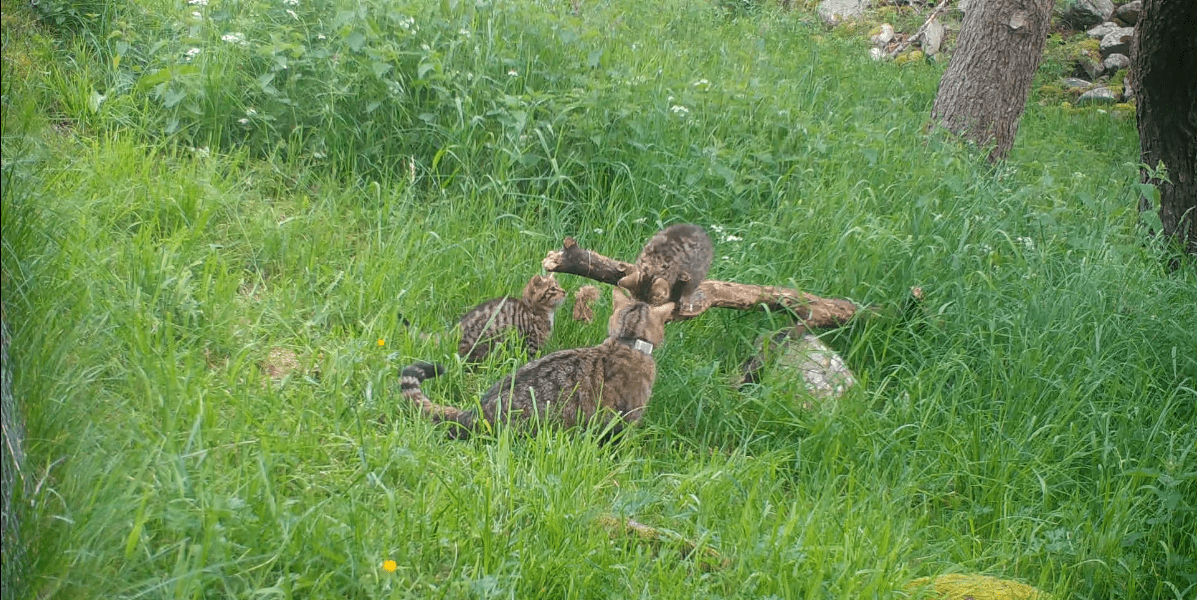
Four wildcat kittens born outside captivity in Cairngorms National Park marks major milestone
Four wildcat kittens have been born in the Cairngorms National Park and are thought to be the first to be born outside captivity in Scotland for more than five years
Following the release of 19 wildcats last summer, at least two females have given birth in the wild.
The species was determined to be on the verge of extinction in 2018, but the births mark a significant milestone in the efforts to restore the wildcat to Scotland by the Saving Wildcats partnership.
‘We suspected that some of the females had given birth when their movement and activity changed very suddenly but didn’t know for sure until footage of the kittens was captured on our cameras,’ Dr Keri Langridge, Saving Wildcats Field Manager said.
‘With the support of local landowners, gamekeepers and the local community, our field team has successfully managed to monitor and film these kittens in the wild – which is no simple task.
‘We didn’t dare to dream that we would have wildcat kittens in the first year of releases, and seeing those kittens on the video was the most exciting moment of the project so far.’
Video footages shows two of the kittens playing in grassland with their mother and leaping on to a fallen tree branch.
Once the wildcats are old enough, experts will attempt to get a DNA profile from them.

Conservationists are hopeful the kittens are indeed the offspring of male wildcats that were released last year – and the first of many more to come.
‘This is a major milestone for wildcat recovery in Scotland,’ Dr Helen Senn, lead for Saving Wildcats said.
‘These births demonstrate that the process of breeding wildcats for release into the wild is working, as those released animals have learned to hunt and survive – and now reproduce in their first breeding season, a clear indication that they are doing well.
‘However, we have to bear in mind that life in the wild is hard and they will face may challenges. While the mortality rate for wildcat kittens in their first year of life can be high, we are hopeful for the future of these kittens.
‘There is also the risk of interbreeding (hybridisation) between wildcats and domestic cats, despite our efforts to trap, neuter, vaccinate and release feral domestic cats in the local area.
‘That’s why we always emphasise the important contribution to wildcat conservation that local people can make by ensuring their pet cats are neutered, as well as microchipped and vaccinated.
‘While we know from their GPS-radio collars that the two females that have given birth have overlapped with male wildcats, we do not yet know their paternity.
‘Once the wildcats are old enough, we will attempt to get a DNA profile from them. We are hopeful that they are indeed the offspring of male wildcats that were released last year – and the first of many more to come.’
Read more Wildlife stories here.
Subscribe to read the latest issue of Scottish Field.
TAGS

